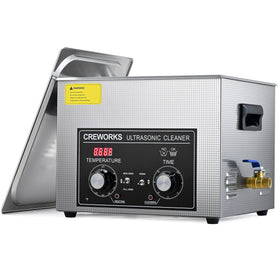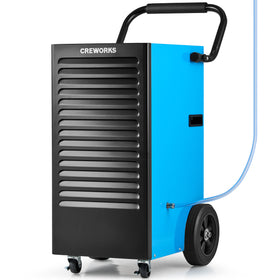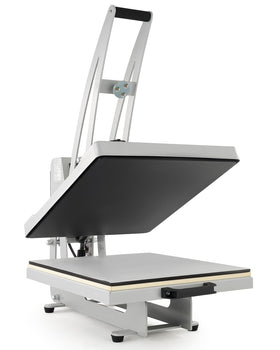With over 10000+ orders
With over 10000+ orders
Alright, let's be honest here. You're probably reading this because your retainer is not looking too great, and you're wondering how to clean a retainer without totally ruining it or making yourself sick in the process.
We've all been there - that moment when you pull out your retainer and think, "Should I really put this thing back in my mouth?"
Here's the deal: retainers are basically bacteria magnets. All that saliva, food particles, and plaque? Yeah, it's all hanging out on your retainer, having a party while you sleep. If you're not cleaning it properly, you're essentially putting a petri dish back in your mouth every night. Gross, right?
But don't worry - figuring out how to clean a retainer doesn't have to be rocket science. I’ll walk you through the three methods that actually work, from the professional-grade solution to simple stuff you probably already have at home.
Let's start with what many consider the absolute best way to clean retainers: ultrasonic cleaners. Now, before you roll your eyes thinking this is some expensive, complicated gadget, hear me out. These things are incredible, and once you try one, you'll wonder how you ever lived without it.
Here's the cool science behind it: Ultrasonic cleaners use high-frequency sound waves - I’m talking 40kHz here - to create tiny bubbles in water through something called cavitation. When these microscopic bubbles pop, they create this amazing cleaning action that gets into every single crack and crevice of your retainer.
The best part? It's completely gentle. Unlike scrubbing with a toothbrush, ultrasonic cleaning doesn't involve any physical contact. Your retainer gets cleaner than it's ever been while staying in perfect condition.
Creworks makes some seriously impressive ultrasonic cleaners, perfect to get your retainers squeaky clean.
The Creworks 120W 3L Digital Ultrasonic Cleaner for $75.99 is perfect if you're just cleaning retainers and maybe some jewelry. The 3-liter size is just right, and it's got this gentle mode that's specifically designed for delicate stuff. You can run it anywhere from 1 to 99 minutes, and the 300W heating power really speeds things up.
But if I had to pick just one, it would be the Upgraded 120W Ultrasonic Cleaner with Degas & Gentle Modes at $89.99. This thing is specifically built for items like retainers and Invisalign. The degas mode removes air bubbles from your cleaning solution, making the whole process way more effective. Plus, it's super quiet at just 60 dB - you can run it anytime without waking up the whole house.
For those of you who want to go all out, the Professional 180W 6L Digital Ultrasonic Cleaner at $125.99 is a beast. With 500W of heating power and that extended 99-minute timer, this is what you want when you need to know how to deep clean retainer situations where things have gotten really bad.
Using a Creworks ultrasonic cleaner is honestly easier than brushing your teeth:
That's it. No scrubbing, no harsh chemicals, no worrying about damaging your retainer. The 304 stainless steel construction means it's food-grade safe, and the controls are so simple that even your grandma could figure them out.
If you don't have an ultrasonic cleaner yet (though honestly, you should get one), hydrogen peroxide is your next best bet for learning how to clean a retainer effectively. This stuff is cheap, you can find it anywhere, and it's surprisingly good at killing bacteria.
This method works pretty well for regular cleaning, but it's got its limits. Hydrogen peroxide can't get into those tiny spaces like ultrasonic cleaning can, and it won't tackle mineral deposits or really stubborn plaque as effectively.
One thing to keep in mind - don't go crazy with this method. Using hydrogen peroxide too often can potentially weaken some retainer materials over time, so stick to a few times per week max.
For those of you who are wondering “how to clean my retainer completely naturally”, baking soda is your friend. This gentle abrasive can tackle surface stains and neutralize odors without any harsh chemicals.
This method is great for surface stains and freshening things up, but it can't match the deep-cleaning power of ultrasonic technology.
The biggest problem with this approach is the scratching risk. Even gentle scrubbing can create tiny scratches where bacteria love to hide, potentially making your cleaning problem worse down the road.
After trying all these methods extensively, ultrasonic cleaning is clearly the winner when it comes to situations where you’d wonder how to deep clean a retainer. Here's why:
It's incredibly thorough. Those ultrasonic waves reach every single surface, including spots you could never clean manually. The cavitation process literally blasts away buildup at the molecular level.
It's completely safe. No scrubbing means no scratching. Your retainer stays smooth and bacteria-resistant for years longer than with manual cleaning.
It's super convenient. Drop it in, set the timer, and walk away. No scrubbing, no mixing solutions, no guesswork involved.
It's versatile. Creworks ultrasonic cleaners work for jewelry, glasses, dental appliances, and tons of other stuff. You're not buying a one-trick pony here.
You get professional results. This is the same technology dentists and orthodontists use, available for home use at prices that won't break the bank.
With the right cleaning method, you can keep your retainer fresh, clean, and safe to use. While hydrogen peroxide soaks and baking soda scrubs can work in a pinch, ultrasonic cleaning delivers professional results every single time. Creworks ultrasonic cleaners make it easy and affordable to keep your retainer in perfect condition with almost zero effort on your part.
Whether you go with the compact 3L model for personal use or upgrade to one of the larger professional units, you'll be amazed at the difference.












Leave a comment